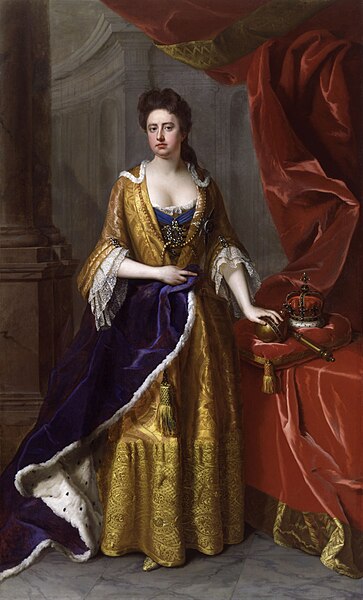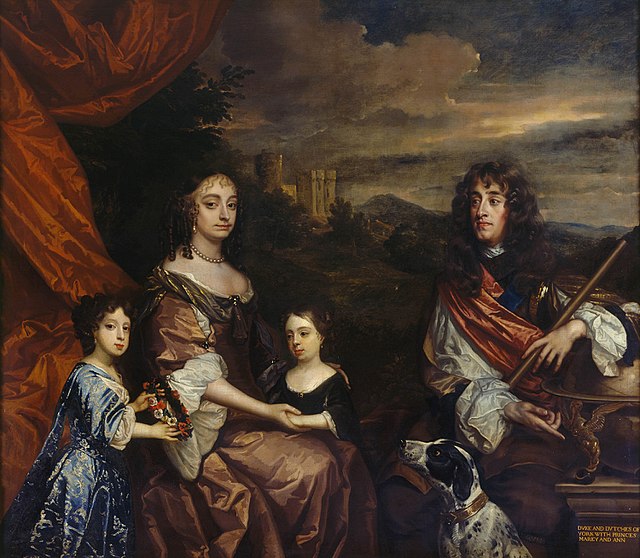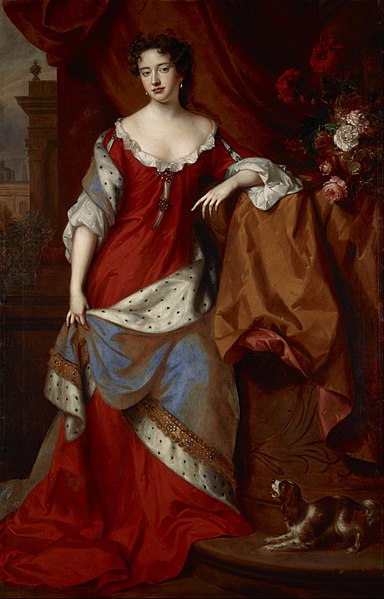The Act of Settlement is an Act of the Parliament of England that settled the succession to the English and Irish crowns to only Protestants, which passed in 1701. More specifically, anyone who became a Roman Catholic, or who married one, became disqualified to inherit the throne. This had the effect of deposing the remaining descendants of Charles I, other than his Protestant granddaughter Anne, as the next Protestant in line to the throne was Sophia of Hanover. Born into the House of Wittelsbach, she was a granddaughter of James VI and I from his most junior surviving line, with the crowns descending only to her non-Catholic heirs. Sophia died shortly before the death of Queen Anne, and Sophia's son succeeded to the throne as King George I, starting the Hanoverian dynasty in Britain.
Facsimile of the Act of Settlement sent to Electress Sophia of Hanover
Princess Anne with Prince William, Duke of Gloucester, whose death in 1700 was the predicate for the Act
Sophia, Electress of Hanover
Anne, Queen of Great Britain
Anne was Queen of Great Britain and Ireland following the ratification of the Acts of Union on 1 May 1707, which merged the kingdoms of Scotland and England. Before this, she was Queen of England, Scotland, and Ireland from 8 March 1702.
Portrait by Michael Dahl, 1705
Anne (centre) and her sister Mary (left) with their parents, the Duke and Duchess of York, painted by Peter Lely and Benedetto Gennari II
Anne, c. 1684, painted by Willem Wissing and Jan van der Vaardt
Mary of Modena and James Francis Edward, Anne's stepmother and half-brother







